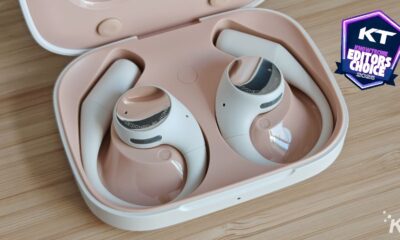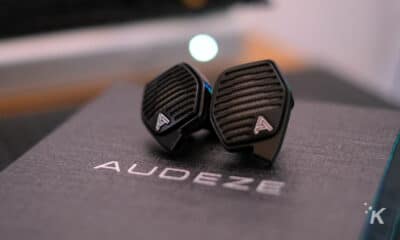Audio
Review: Nuraphone headset and gaming microphone attachment
Perfectly customized audio (if they fit your ears)
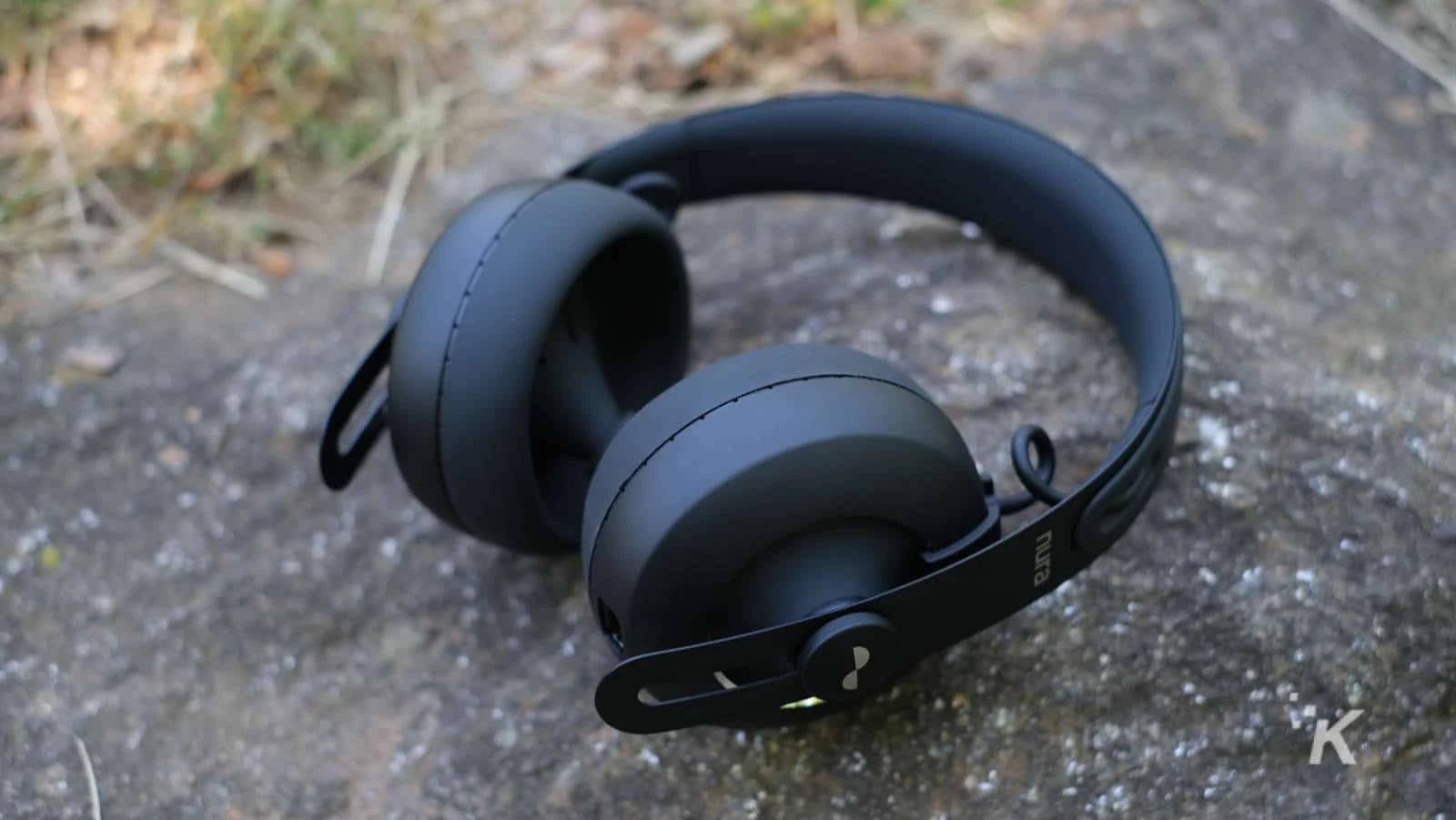
Just a heads up, if you buy something through our links, we may get a small share of the sale. It’s one of the ways we keep the lights on here. Click here for more.
[letsreview postid=”145901″]
Nura started life as a Kickstarter way back in 2017, with the $399 promise of customized audio profiles for everyone. Since then, they’ve been busy, creating the IEM version, the Nuraloop, and a rent-to-own subscription service that makes the sticker shock of $400 headphones slightly less.
Nura just released a new $49 gaming microphone attachment, which turns the $399 Nuraphone into a wired gaming headset, while keeping all of the audio signature customizations they’re known for. Nura sells them as a bundle for $419 as well. Is it a worthy contender for your dollars?
So, what’s it all about?
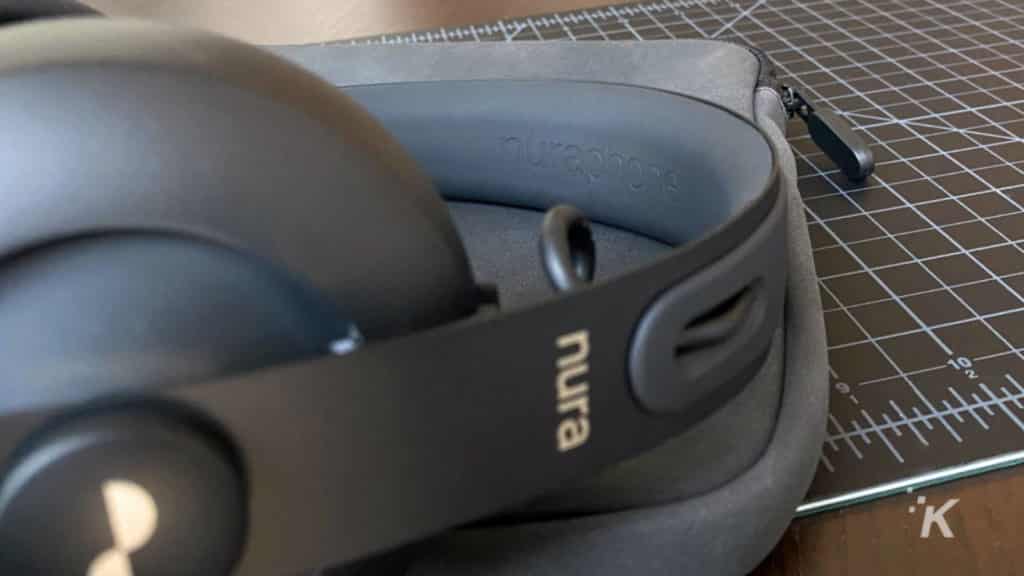
If your first thought when seeing the above image of the Nuraphone’s earcups was “wtf is that?”, you’re not alone. The design of these is a hybrid, with a large driver to supply the low end via the earcup, and a small IEM tip in the middle that doesn’t just supply mids and the high end, but also powers Nura’s superpower (more on this later). Those IEM tips are changeable, and Nura ships a few sizes so you can find the right fit for your head.
Every single part of these headphones feels premium, from the solid-but-flexible headband to the aluminum earcups with their silicone-wrapped side that sits on/in your ears.
There are no visible controls, power is handled by hidden sensors that know if it’s on your head or not, and the sides of the earcups have touch sensitivity that you can map to your favorite setting inside the Nura app.
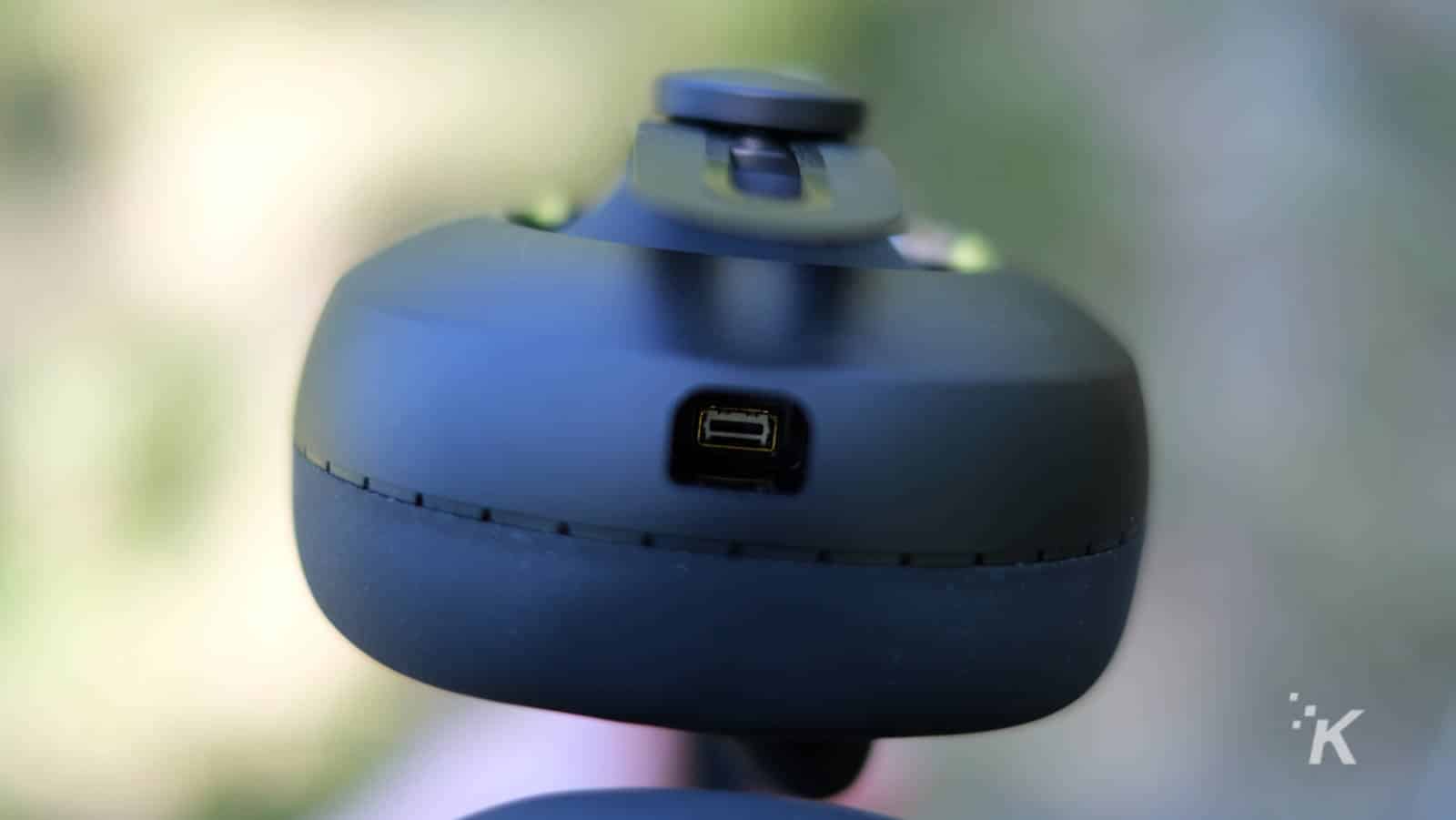
Connectivity is handled by Bluetooth, mostly, and yes it does have Apt-X for better quality. Charging is handled by a multi-purpose, proprietary port, which can be used for the charging cable, for USB-C or Lightning cables (sold separately), for an adapter to 3.5mm analog, or to plug in the Nura gaming microphone.
I’ve got mixed feelings about the proprietary connector, as I’d really prefer USB-C to become the universal standard, but Nura’s connector does bring less chance of the mic cable falling out.
Battery life is up to 20 hours, even when plugged in with the wired gaming microphone cable, and it won’t charge when it’s using that so you’ll have to unplug, find the Nura-to-USB cable, and plug that in to charge. This is maybe only a minor inconvenience as you can charge overnight, but it’s still annoying. Maybe a future revision of the microphone attachment will use USB so it can charge while being used.

Okay, before we get into how the Nuraphone does with gaming content, we really should talk about the Nuraphone’s superpower. That’s the hearing-measuring microphones that are buried inside the IEM tips. Unlike most of the adaptive sound signature systems on the market, which play you tones and ask you to respond when you hear them, Nura’s measurements are all automatic and give you a personalized sound profile in about a minute.
Yes, you did hear that correctly. The Nuraphone plays a range of tones into your ear, then measures the sound that bounces back from your cochlea via your eardrum. Then it turns those return signals into your profile, with the aim of tweaking the sound you’ll hear to give you the most detail. Isn’t science great?
I’d like to see Nura create a larger earcup version, for those of us (like me) who have ears on the larger side. It’s not uncomfortable wearing the Nuraphone, but I really don’t like having the earcups resting on my earlobes. It probably doesn’t help the seal and positioning needed for the testing microphones either.
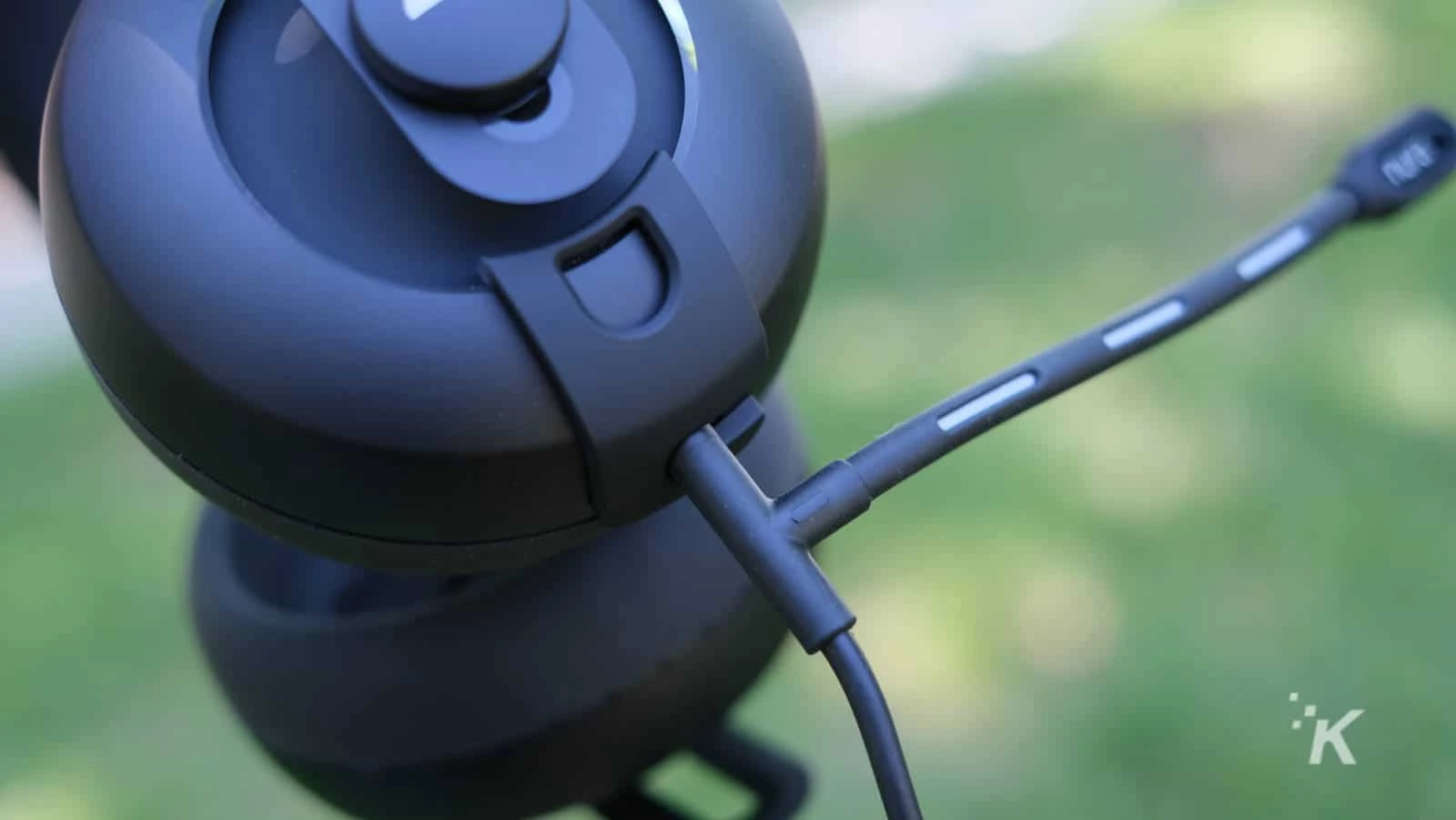
The new gaming microphone goes into the proprietary port, putting the boom mic in line with your mouth. It’s also got a volume control and a mute switch and ends in a 3.5mm TRRS universal connector so you can use it with your consoles, your computers, or anything with a 3.5mm jack.
It’s also got a securing hook so the cable won’t fall out, and you can rotate this to the top of the earcup to keep it safe when you’re not using the mic add-on.
So, how does the Nuraphone headset sound?
Okay, we’ve got everything covered so it’s time to listen, right? Well, no, because we still need to set up the app, the hearing profile, and map the touch-sensitive earcups if we don’t want the defaults. Once the headphones have mapped out your ears, it’s now finally time for some tunes.
Now, your mileage may vary here, as everyone’s hearing is different. Then again, that’s what the Nuraphone is supposed to even out, and we can report that for us it was a surprising difference.
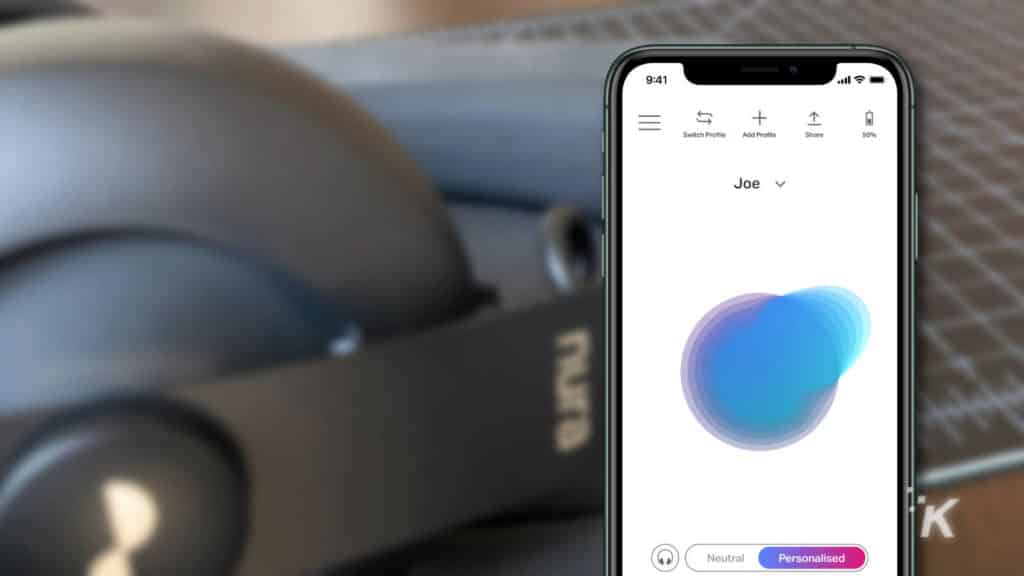
Here’s my personalized sound profile after the Nuraphone has done its work. Think of 12 o’clock as the sub-bass region, and higher notes as you go around the circle clockwise. Nura’s tests show that my ears are sensitive to bass, but not particularly sensitive or insensitive to any other frequency.
I wouldn’t have thought listening to music with my new personalized profile, with its minor changes, would have been a huge difference but I was wrong. The Nuraphone without the profile activated is accomplished already, with crisp highs, clear mids, and some hefty bass, but turning the sound profile on gives it some phat bass and an overall richness that I’ve not heard on a pair of wireless headphones before now.
That profile can be tweaked further, as you can choose how strong the personalized profile is, and also how strong the bass response is. That last one is great, letting you choose from “smooth” to “omg I put my head in the bass bin for fun.” The cool thing here is that because the bass is hitting your ear and not your eardrum, you don’t run the risk of hearing damage from the bass.
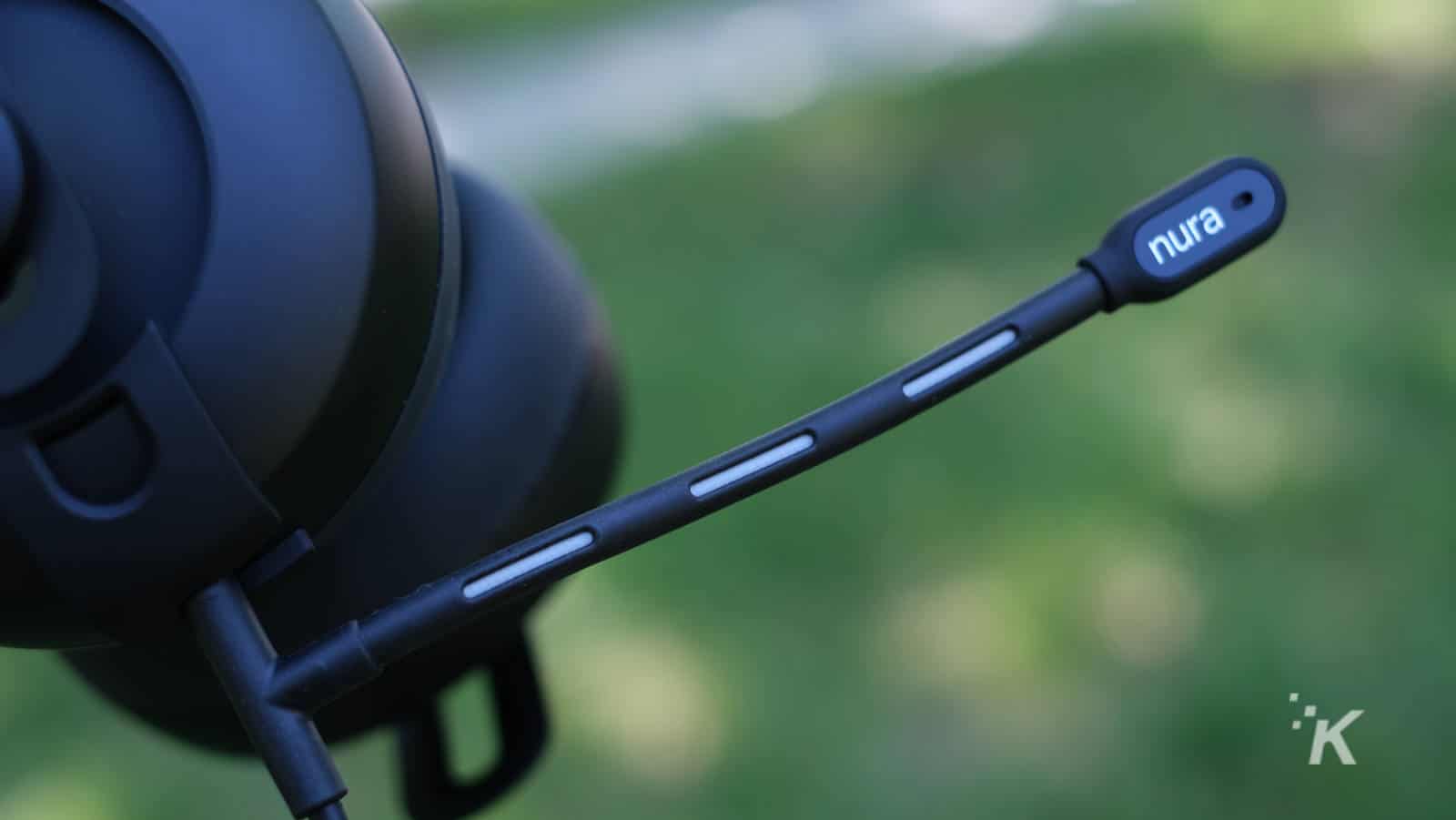
That bass finds its own when you start your favorite game, from explosions to bullets and every single other sound effect given a visceral feel on your ears. It’s really quite something to be able to feel sub-bass without a subwoofer shaking the apartment, and Nura’s really got something here.
Add to that the superb ANC and passive noise cancelation and it really is some of the most immersive gaming audio I’ve experienced from a pair of headphones. The only minor drawback? The microphone cable ends in a 4-pin 3.5mm plug, and Nura doesn’t include an adapter to split this out. For such a premium product, this feels like an oversight on Nura’s part.
Oh, and if you like being able to hear your own voice while you game? You’ll want to turn on Social Mode, which is Nura’s ambient listening mode. It uses the onboard mic that’s normally used for phone calls to listen to your surroundings and add that into the audio from your game, and it works well.
Almost too well, with sounds in my living room being highly amplified, and slightly confusing until I realized that the weird clicking noise was my toddler playing with their magnetic tiles. Nura’s been steadily improving the firmware on these though, so maybe a future update can tone down that mix slightly, or even give you a slider in the app so you can choose how audible your surroundings are.
So, should I buy it?
For $419 as a bundle with the Nuraphone and the gaming microphone, it’s on the higher end of the spectrum for gaming headsets. That said it’s a premium device that can do one thing that no other headphone can – make your ears feel the wind from the bass.
The technology here is forward-thinking in the extreme, trying to push audio reproduction past the paradigms of the past. The thing is, not everyone likes wearing IEMs, which is why you have headphones and vice versa. It feels to me like a set of headphones that requires both is going to be a hard sell to most of the market, but if you can put your preconceptions aside it’s worth it.
Have any thoughts on this? Let us know down below in the comments or carry the discussion over to our Twitter or Facebook.
Editors’ Recommendations:
- Review: Celestron StarSense Explorer refractor telescope
- Review: Eggtronic Ultra-Fast power bank
- Review: Omega Chair – big on features, but what about comfort?
- Review: EPOS H3 – a super comfortable plug-and-play gaming headset
Just a heads up, if you buy something through our links, we may get a small share of the sale. It’s one of the ways we keep the lights on here. Click here for more. A sample unit was provided for the purpose of this review.
















